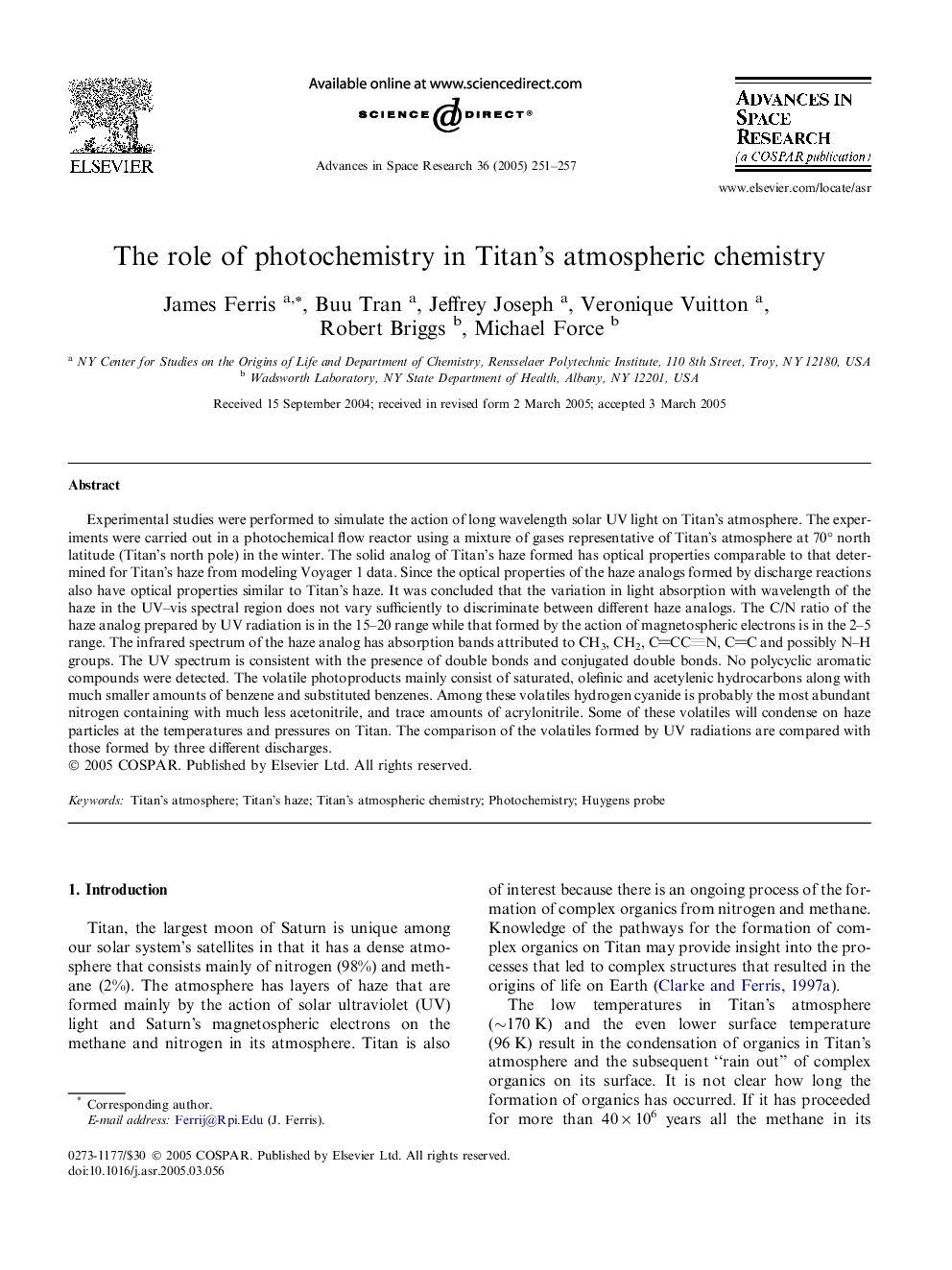| Article ID | Journal | Published Year | Pages | File Type |
|---|---|---|---|---|
| 10696897 | Advances in Space Research | 2005 | 7 Pages |
Abstract
Experimental studies were performed to simulate the action of long wavelength solar UV light on Titan's atmosphere. The experiments were carried out in a photochemical flow reactor using a mixture of gases representative of Titan's atmosphere at 70° north latitude (Titan's north pole) in the winter. The solid analog of Titan's haze formed has optical properties comparable to that determined for Titan's haze from modeling Voyager 1 data. Since the optical properties of the haze analogs formed by discharge reactions also have optical properties similar to Titan's haze. It was concluded that the variation in light absorption with wavelength of the haze in the UV-vis spectral region does not vary sufficiently to discriminate between different haze analogs. The C/N ratio of the haze analog prepared by UV radiation is in the 15-20 range while that formed by the action of magnetospheric electrons is in the 2-5 range. The infrared spectrum of the haze analog has absorption bands attributed to CH3, CH2, CCCN, CC and possibly N-H groups. The UV spectrum is consistent with the presence of double bonds and conjugated double bonds. No polycyclic aromatic compounds were detected. The volatile photoproducts mainly consist of saturated, olefinic and acetylenic hydrocarbons along with much smaller amounts of benzene and substituted benzenes. Among these volatiles hydrogen cyanide is probably the most abundant nitrogen containing with much less acetonitrile, and trace amounts of acrylonitrile. Some of these volatiles will condense on haze particles at the temperatures and pressures on Titan. The comparison of the volatiles formed by UV radiations are compared with those formed by three different discharges.
Related Topics
Physical Sciences and Engineering
Earth and Planetary Sciences
Space and Planetary Science
Authors
James Ferris, Buu Tran, Jeffrey Joseph, Veronique Vuitton, Robert Briggs, Michael Force,
